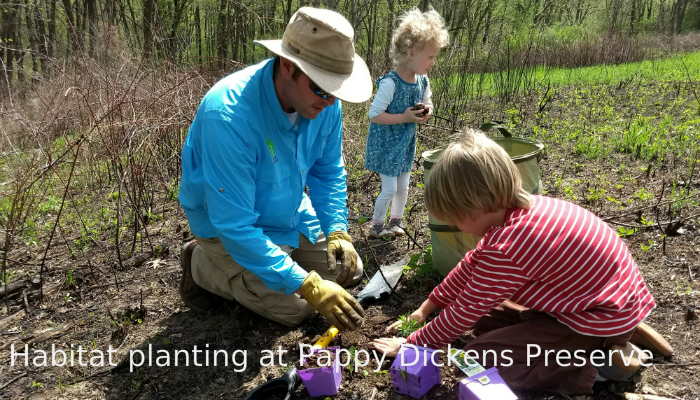Building Backyard Habitat

Two decades ago, Toni Stahl and Marc Apfelstadt were contemplating converting their city lot in Dublin, Ohio to habitat for native wildlife. The books and ads back then said that if you planted an area as small as your yard to natives, that native animals would find it and utilize it. But the actual data, which demonstrated this to be true, was kinda skimpy and was more anecdotal than scientific.
So Toni and Marc decided to treat their city lot as an experiment, with good documentation, and put the results online. Beginning with an ordinary city lot of mown grass and a few marigolds, they began to methodically replace them with a chemical-free landscaping plan dominated by native forbs, grasses, shrubs, and vines. At the same time they recorded all native animal species observed in their yard that year. The results for their first six years are tallied below by species and are rather impressive for just a little suburban lot:
| Year: | 2001 | 2002 | 2003 | 2004 | 2005 | 2006 |
| Native Plants | 3 | 10 | 59 | 79 | 94 | 113 |
| Birds | 4 | 9 | 30 | 31 | 33 | 37 |
| Butterflies | 2 | 3 | 16 | 18 | 32 | 33 |
| Other Insects | 13 | 16 | 35 | 39 | 44 | 51 |
| Mammals | 2 | 4 | 8 | 8 | 9 | 9 |
So imagine what could be accomplished if you and your in-town neighbors all worked together to convert a whole block of backyards into a block of natives.
Or if that is not practical for you, Bur Oak Land Trust already has parcels of semi-wild land just waiting for someone to help clear out the invasives and restore with natives. Call property stewardship specialist Jason Taylor at 319-338-7030 to volunteer.
And today there is more detailed advice about the how and why of landscaping with natives for natives. One of the best is Doug Tallamy’s book, Bringing Nature Home: How Native Plants Sustain Wildlife in Our Gardens.
And if you want more detail on Toni and Marc’s home project, go to “Residential Land Stewardship: Impact on Biodiversity.”


